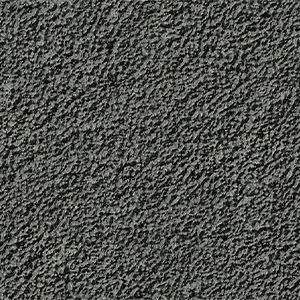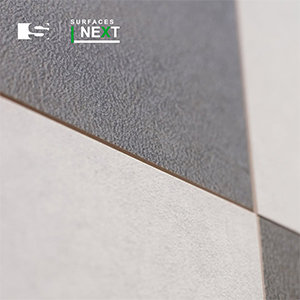Index
- Introduction
- Anti-slip classification: what to know
- R10 or R11: technical differences compared
- Safe materials for outdoor paving
- Ideal applications: when to use R10, when to use R11
- Pros and cons of the two solutions
- Maintenance and durability
- Conclusions and technical advice
- FAQ

Introduction
In the world of outdoor flooring, safety is a must. Falls and slips are among the most common accidents, even in professional settings, which is why choosing a slip-resistant level is a strategic step in any construction project.
In ceramics, R10 or R11 classification represents two of the most popular and appreciated solutions for combining technical performance, wear resistance, and architectural design.
Sicer‘s decades of experience in the ceramic materials industry has led to the development of surfaces such as the NEXT EXPERIENCE SURFACES series, designed to provide safety, aesthetics and ease of maintenance in a single solution.
Anti-slip classification: what to know
To ensure safe floors in outdoor environments, it is critical to understand how slip classification works, which allows surfaces to be evaluated according to their degree of adherence under normal and critical conditions, such as in the presence of water or moisture.
The most widely used reference scale in Europe is that defined in EN 16165, which establishes an inclined ramp test method for determining the dynamic coefficient of friction of a surface. The test involves the use of a lubricated ramp and standard footwear, simulating walking under real-world conditions.
This classification is expressed by values from R9 to R13:
- R9: low adhesion, only suitable for dry indoor environment
- R10: medium adhesion, for covered or semi-exposed outdoor areas
- R11: high adhesion, recommended for exposed exteriors such as courtyards, ramps or swimming pools
- R12-R13: surfaces for industrial environments or subject to high slip hazard
A higher coefficient of friction corresponds to a greater ability of the pavement to resist slippage, thus contributing to the overall safety of the space.

In an industry like ceramics, where technical performance is an essential component of the product, choosing surfaces with the correct R rating means ensuring safety for the end user, complying with building codes and improving the usability of spaces.
Thanks to the work of Sicer’s R&D laboratories, it is now possible to design slip-resistant ceramic surfaces that achieve excellent friction values without compromising design. Solutions from the NEXT EXPERIENCE SURFACES series, for example, combine anti-reflective material textures and calibrated grain size technologies to offer slip-resistant surfaces certified from R9 up to R12.
R10 or R11: technical differences compared
When choosing an outdoor anti-slip floor, one of the key aspects to consider is the level of slip resistance, which is expressed through the R ratings. The R10 and R11 ratings are among the most popular for residential and commercial environments, and they meet different performance and safety requirements.
The technical characteristics of R10 and R11 floors vary mainly by:
- The degree of adhesion in the presence of water or moisture;
- The type of surface (more or less textured);
- The resistance to wear and tear and external agents;
- The aesthetic integration with the architectural style of the environment.
Here is a comparative table highlighting the main differences:
| Feature | R10 | R11 |
| Slip resistance | Medium (10°-19°) | High (19°-27°) |
| Safety in wet environments | Good | Excellent |
| Surface texture | Slightly structured | More pronounced and high grip |
| Aesthetics | Versatile and similar to indoor floors | More textural, suitable for outdoor |
| Ease of cleaning | High | Good, if technological surface |
| Examples of use | Loggias, covered terraces | Stairs, pool edges, open courtyards |
Choosing between the two options is not only a regulatory issue, but also a design issue. An R10 outdoor nonslip floor, for example, may be perfect for areas protected by roofing, where the balance between aesthetics and safety is a priority. Conversely, an R11 floor is essential in more exposed settings, where a higher coefficient of friction is required.

Thanks to the research conducted in Sicer’s development laboratories, it is now possible to obtain surfaces that combine the best technical characteristics of non-slip floors with modern and refined finishes.
Sicer finishes ensure strength, safety and design even in critical conditions, with tested and certified solutions for every design need.
Safe materials for outdoor paving
In the ceramic landscape, several solutions offer surfaces with R10 or R11 classification. Sicer offers certified finishes, designed in collaboration with R&D departments and tested according to the main anti-slip standards.
High-performance materials include:
- Non-slip porcelain stoneware.
Versatile, frost and impact resistant, suitable for both residential and commercial use. - Outdoor ceramics
Glazed surface with specific textures, ideal for terraces and covered areas. - Engineered natural stone
Fine aesthetics, but requires frequent maintenance and specific treatments.
Ideal applications: when to use R10, when to use R11
Each architectural project presents unique environmental and functional conditions.
Whether it’s a courtyard, covered terrace, or poolside, choosing the most suitable outdoor nonslip floor means carefully evaluating the interaction between foot traffic, weather exposure, and safety regulations.
R10 and R11 classifications, while seeming similar, respond to very different usage scenarios.
It is important to know the application context in which each level performs best, also to avoid solutions that are over- or under-dimensioned compared to real needs.
Below is an overview of typical use cases:
R10 – Recommended for:
- Covered terraces and living areas with outdoor access
- Porches or pergolas with poor exposure to rain
- Exterior entrances in condominium or residential settings
R11 – Suitable for:
- Fully uncovered courtyards, driveways and pavements
- Exterior stairs and inclined ramps
- Swimming pools and pool edges, including public
- Outdoor spaces with high traffic or subject to waterlogging
Thanks to Sicer‘s technical expertise, custom flooring can be designed for any outdoor area, selecting materials that precisely meet the needs of safety, durability and aesthetic value.
Pros and cons of the two solutions
The choice between an R10 or R11 floor is never absolute.
Each level has advantages and limitations that must be evaluated in the overall context of the project.
In fact, the technical characteristics of slip-resistant ceramic floor tiles also influence practical aspects such as routine maintenance, aesthetic compatibility with the surrounding architecture, and walking sensation.
At this stage, the comparison of options should be done from a functional perspective, avoiding simplifications. While R10 offers greater continuity with indoor surfaces and is easier to clean, R11 provides superior adhesion even in critical conditions, such as heavy rain or sloping surfaces.
| Benefits | Disadvantages | |
| R10 | Aesthetics more similar to indoor floors, easier maintenance | Less grip in wet conditions |
| R11 | Superior safety, ideal for environments exposed to the elements | More noticeable texture, can retain dirt if non-technological |
The solutions developed by Sicer-such as the NEXT EXPERIENCE SURFACES line-are created precisely to reduce these trade-offs: non-slip surfaces, while textured, remain pleasant to the touch and easy to clean, thanks to a calibrated grain size that is controlled down to the smallest detail.
Maintenance and durability
One aspect that is often overlooked is the maintenance of safe floors.
Quality non-slip surfaces, such as those developed in Sicer laboratories, are designed to last without losing adhesion.
The surfaces of the NEXT EXPERIENCE SURFACES range resist chemicals, weathering and wear and tear while maintaining perfect cleanability due to the glazed and calibrated structure.
Conclusions and technical advice
In the ceramic tile industry, the distinction between R10 and R11 floors is not just a regulatory issue, but reflects the needs of an end market that is increasingly focused on safety, regulation, and the user experience of outdoor spaces.
As a result, ceramic surface companies are faced with the challenge of designing versatile collections capable of responding to widely varying application contexts, from private poolside to high-traffic urban paving.
In this scenario, Sicer acts as a technology partner for the development of advanced materials, such as the NEXT EXPERIENCE SURFACES series, which offers finishes with R9 to R12 ratings, with high non-slip performance, excellent cleanability and design freedom.
FAQ
Indicates medium slip resistance, ideal for partially covered outdoor areas.
It is a classification that signals high slip resistance, suitable for fully exposed outdoor settings.
By analyzing exposure, traffic and regulations. A Sicer expert can help you evaluate the ideal solution.
It depends on the technology: those Sicer, like NEXT EXPERIENCE SURFACES, are designed to combine grip and ease of cleaning.







